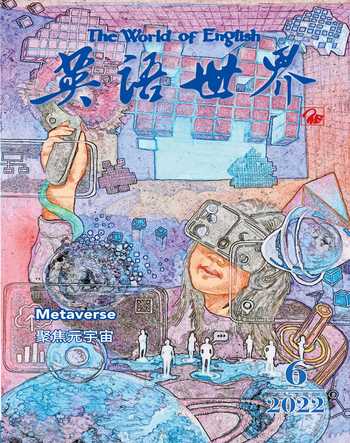What Made the Volcanic Eruption in the Pacific So Destructive?南太平洋火山噴發為何破壞力大?
張燦
Most of the world’s volcanism takes place underwater. This is not just because most of the world’s surface is underwater. It is because plate tectonics1 has placed the seams where the Earth’s crust is created and destroyed: in the ocean’s depths. The volcanic activity associated with creation is slow and steady, and it takes place a long way beneath the waves, all of which makes it very benign. That which accompanies the destruction is a lot more troublesome.
Witness the eruption of the Hunga Tonga-Hunga Ha’apai volcano in the Kingdom of Tonga at 04:15 GMT on January 15th, which created a huge cloud of ash and a potentially devastating tsunami.
The eruption was driven by subduction which sees one plate sink beneath the edge of another. Subduction zones2 are responsible for most of the world’s most violent eruptions, most famously in the “Ring of Fire3”—actually more like a horseshoe—around the Pacific. The Tonga Trench sits at its south-western tip. The volcanoes associated with the trench do not tower into the sky like those of Chile, Indonesia or Japan. But they can still pack a punch4.
Hunga Tonga-Hunga Ha’apai, which has a base about 20km across and rises some 1,800 metres above the seafloor, takes its name from the two parts of the rim of its crater, or caldera, that rise above the sea: the small uninhabited islands of Hunga Tonga and Hunga Ha’apai. An eruption that started in December 2014 filled in the gap between them with lava and ash, making the two islands one. A series of eruptions which began late last year saw the now unified island grow further.
In the eruption of January 15th a far larger amount of molten rock escaped from the magma chamber5 below the caldera. The sudden depressurisation of the gases dissolved within the lava, along with the vaporisation of vast amounts of seawater, made the eruption spectacularly explosive. A cloud of ash reached more than 20km into the sky; a global system of sensors operated by Vaisala6, a Finnish company, revealed the column of ash spewing forth to be roiling with lightning—some 100 bolts a second at the peak. The explosion was audible many thousands of kilometres away, its shock wave measured all around the world. Satellites showed the dust it threw up spreading out into a disc more than 250km across once it reached the stratosphere; it looked as if the planet had developed a pimple half as big as England.
Closely linked to this explosion above the surface seems to have been an implosion below. When an eruption empties out a magma chamber the rock above it is undermined. This is the process which creates calderas. The eruption on January 15th seems to have seen at least a partial collapse; satellite data show that only a small part of one of the old islands remains above the waves. The collapse probably played a role in the tsunami that followed. Most tsunamis are triggered by earthquakes; only about 5% are associated with volcanoes. But the shock wave which comes from a caldera collapse is an effective way of starting one.
How much damage the eruption did is as yet unclear. On January 17th Australia and New Zealand sent surveillance flights to assess the damage. Communications with Tonga have been sparse. Satellite pictures show tsunami damage to various structures near the coast of Tongatapu7, the main island in the kingdom, which is 65km south of the volcano. Heavy falls of volcanic dust—centimetres or even tens of centimetres—will have come down on the island, too, imperilling fresh-water supplies and other vital infrastructure.
Effects beyond Tonga, though, are likely to be minimal. Some large volcanic eruptions affect the climate by injecting large amounts of sulphur dioxide into the stratosphere, where it produces a long-lasting smog of tiny particles which reflect sunlight and thus change weather patterns around the world. The amount of sulphur that came out of Hunga Tonga-Hunga Ha’apai seems much too low to have any large-scale cooling effect, though its influence on the temperature and dynamics of the southern hemisphere’s stratosphere may be large enough to be of interest to scientists.
Geologists have found evidence of similar spasms at Hunga Tonga-Hunga Ha’apai, one about 1,000 years ago, one about 2,000 years ago. In both of those cases there seem to have been multiple eruptions. That does not necessarily mean the same will happen this time. The people living close to the volcano will hope that there is no more damage to come.
世界上大部分火山活動都發生在海底。這不僅因為地球表面大部分被海洋覆蓋,還因為板塊運動使地殼形成和破裂的接縫位于海洋深處。與地殼形成有關的火山活動緩慢穩定,且發生在海底深處,這些都使其不至于造成太大的破壞。但火山活動與毀壞結伴而來時,情況則麻煩得多。
2022年1月15日格林尼治標準時間04:15,湯加王國的洪阿哈阿帕伊島火山噴發,形成巨大的火山灰云,還引發了可能造成很大破壞的海嘯。
此次噴發是由板塊俯沖引起,即一個板塊擠到另一板塊邊緣下方。世界上絕大多數最猛烈的火山噴發都與俯沖帶有關,最著名的要數環太平洋“火圈”了,其形狀實際上更像一塊馬蹄鐵。湯加海溝就位于“火圈”的西南端,這里的火山不像智利、印度尼西亞和日本的火山那樣高聳入云,但噴發的破壞力仍不可小覷。
洪阿湯加-洪阿哈阿帕伊島火山底徑跨度約20千米,高出海床約1800米,因其火山口邊緣突出海面的兩部分而得名:無人居住的洪阿湯加島和洪阿哈阿帕伊島。2014年12月一次噴發后,熔巖和火山灰填補了兩島間的空隙,使其合二為一。2021年年底的幾次噴發使得合為一體的島嶼進一步擴大。
在1月15日的噴發中,遠超以往的大量熔巖從火山口下方的巖漿房噴涌而出。溶解在巖漿中的氣體突然失壓,海水大量蒸發,都讓此次噴發又大又猛,蔚為壯觀。火山灰云沖向20多千米的高空;芬蘭維薩拉公司運營的全球傳感器系統顯示,噴出的火山灰柱翻騰中夾著閃電——最高時每秒產生約100次閃電。爆炸聲在數千公里外都能聽到,產生的沖擊波在世界各地都可以監測到。衛星數據顯示,噴發出的火山灰一到達平流層就擴散成直徑超250千米的一大片,看起來就像是地球長出了一個有英格蘭一半大的丘疹。
與海平面上方的爆炸密切相關的似乎是海面下的內爆。當火山噴發排空巖漿房時,位于其上方的巖石就遭到破壞,這是形成火山口的過程。1月15日的噴發似乎至少導致了火山口的部分坍塌;衛星數據顯示,僅原有一座島嶼的一小部分仍位于海平面以上。坍塌可能引發了隨后的海嘯。絕大多數海嘯是由地震引發的,只有5%左右與火山噴發有關,但是火山口坍塌產生的沖擊波也是引發海嘯的一大原因。
尚不清楚此次火山噴發到底造成了多少破壞。1月17日,澳大利亞和新西蘭派出偵察機以評估損失。外界與湯加的聯系很少。衛星圖片顯示,海嘯損毀了湯加塔布島沿岸的各種建筑——該島是湯加王國的主要島嶼,位于洪阿湯加-洪阿哈阿帕伊島火山以南65公里處。厚達幾厘米甚至幾十厘米的大量火山灰將落在島上,危及淡水供應和其他重要的基礎設施。
不過,此次噴發對湯加以外地區的影響可能很小。一些大型的火山噴發向平流層注入大量的二氧化硫,從而影響氣候。在平流層中,二氧化硫會形成由微小顆粒構成、長期不散的霧霾,這些顆粒會反射陽光,從而影響全球的氣候模式。洪阿湯加-洪阿哈阿帕伊島火山噴發出的含硫氣體似乎不多,不足以產生任何大規模的降溫效果,但它對南半球平流層的溫度和大氣動力的影響可能足以引起科學家們的關注。
地質學家在洪阿湯加-洪阿哈阿帕伊島火山地區發現了相似噴發的證據,一次約在1000年前,一次約在2000年前,似乎每次都發生了多次噴發,但這并不一定意味著此次噴發也會發生同樣的情況。住在火山附近的人們希望不會再發生破壞。
(譯者單位:鄭州大學外國語與國際關系學院)
1 plate tectonics板塊運動。? 2 subduction zones俯沖帶,通常指大洋板塊俯沖于大陸板塊之下的構造帶。
3 Ring of Fire火圈,又稱環太平洋火山帶,太平洋經常發生地震和火山噴發的區域,呈馬蹄形。? 4 pack a punch產生巨大影響。? 5 the magma chamber巖漿房,是地殼中儲集巖漿的場所。? 6 維薩拉公司,在全球范圍內研發、生產、銷售環境和工業測量產品。
7 湯加塔布島,位于湯加的最南端,是湯加最大的島嶼,占全國土地面積的三分之一。

